Why Your Resume Isn’t Enough (What to Use Instead)
Stand out with your Career Walking Deck
Hello, it’s Ethan & Jason. Welcome to Level Up: Your guide to grow fast, avoid mistakes, and make optimal career moves.
4 FYIs:
(July 26) Virtual networking event. Led by Arun (Senior Cloud Solutions Architect Manager, KPMG). Exclusive to newsletter paid subscribers, RSVP here.
(July 30) Palo Alto, CA Executive Empowerment Growth Salon dinner. Led by Lisa (Harvard Health Lab Accelerator Mentor & Former Managing Director, Alibaba Group). Exclusive to newsletter paid subscribers, RSVP here.
Jason & Dee Murthy unpack what rocketship startup founders look for when hiring their leadership team. Candid no BS takes. Watch here.
Ethan & Sue Bethanis breakdown how to influence senior leaders. Develop your executive presence by balancing gravitas and grace Watch here.
We are thrilled to feature a guest post by Karen K. Ngo, CEO Communications Manager at Microsoft and the force behind the career blog (kkarenism.com) which ranks #1 on Google/Bing for "Career Walking Decks.” With over 200,000 views and 100,000 visitors from 116 countries, her Resume Rescue service has helped 200+ people land interviews and jobs at companies including Microsoft, Amazon, Shopify, and Salesforce. A sought-after speaker, Karen has presented to 8,000+ people around the world including Fortune 50 senior leaders, retired NFL players, and U.S. military veterans on topics like job hunting, personal branding, networking, and more.
In this article, Karen breaks down how she used her own Career Walking Deck to stand out and teaches you how to nail the four critical components:
Personal brand, philosophy and values
Goals, interests, and aspirations
Proudest wins and achievements
Your SWOT analysis and action plan for success
Read on to build your deck, make an impression, and stand out from the crowd.
Why Your Resume Isn’t Enough (What to Use Instead)
When I first joined Microsoft, I was a nobody.
My mentor even called it out: I didn’t have a personal brand and without one, I would struggle to advance in my career. It didn’t matter that I had a good resume, I had no rapport compared to others who had prior internship or contractor experiences.
This hit me hard, but it was the wake-up call I needed to define my career story.
So, I set out to figure out how to stand out among 200,000 employees at one of the largest public companies in the world. This was especially challenging during a global pandemic when everyone was working remotely. Within five years, I moved from Canada to the U.S.—advancing from a new grad in sales operations to CEO Communications Manager, where I am now driving AI transformation and optimizing processes for the Office of CEO while partnering with global teams to execute CEO events, operations, and communications.
Through my own experiences and by having hundreds of career conversations with high performers, senior leaders, and even the C-Suite, I learned that:
To attract new opportunities, you need to attract attention and interest.
To attract attention and interest, you need to know what your story is and how to tell it effectively.
To develop an authentic, captivating story that stands out, you need a career walking deck (not a resume).
What is a career walking deck?
One of the best career tips I’ve learned at Microsoft was how to create a career walking deck. Many of the highest performers who accelerated into leadership positions had this kind of asset handy for their presentations, coffee chats, and job interviews. For my current role in the Microsoft Office of CEO, I didn’t even share my resume—just a career walking deck—with my hiring manager.
The career walking deck is the visual evolution of your resume and cover letter.
It’s a 5-10 slide presentation that helps you introduce yourself and share your career story in a way that captures interest. For those of you who find coffee chats or interviews awkward or intimidating, a career walking deck is great at helping you break the ice and feel more confident.
A career walking deck consists of the following slides:
Personal brand, philosophy and values
Goals, interests, and aspirations
Proudest wins and achievements
Your SWOT analysis and action plan for success
Why do you need a career walking deck?
A career walking deck helps you create a more personal connection with decision-makers. From talking to hundreds of senior leaders and professionals, I’ve learned that hiring decisions are often based more on feelings than facts. That’s why making a strong, positive impression in a coffee chat or job interview is crucial—and where a career walking deck helps you fill in the gaps that a traditional resume, cover letter, and LinkedIn profile don’t. For example, when a European colleague started looking for a U.S.-based role, he found several managers at Microsoft advising him to create a career walking deck.
I’ve personally found that a career walking deck gives the “surprise and delight” effect when I bring it up. People don’t expect you to have one, but they appreciate that you took the extra time to put it together. In a world where people are often distracted, your career walking deck piques their interest and gives them something to pay attention to. And once they start paying attention, you have the opportunity to make a stronger impression and form a deeper connection.
A career walking deck helps you showcase your strengths and unique selling points in a way that’s easy to understand and remember. This can be especially helpful in virtual settings, networking events and job interviews, where you may only have a few minutes to make a strong, positive impression. Not only does it help you stand out in an interview, it helps you organize your thoughts better. In fact, going through the exercise of creating a career walking deck is great interview prep because it pushes you to think through how you want to present yourself and where to emphasize certain skills, experiences, and growth opportunities. By putting your experiences and achievements into a visual format, you can better see patterns and themes that emerge, and end up with a clear story about who you are and what you have to offer.
LJ Marinello, senior director at Microsoft, says the point of having a career walking deck is for you to build a connection with the hiring manager. Although they won’t hold it against you for not having one, it could become a key differentiator if you were tied with another candidate. Apart from your resume and cover letter, your career walking deck is also a way to demonstrate your written communication and digital creativity skills, which aren’t as easy for hiring managers to gauge.
A career walking deck helps you stand out from the competition. Hiring managers see resumes and cover letters all the time, but career walking decks are still a novelty that will differentiate you. By creating one, you can demonstrate your creativity, innovation, and willingness to go the extra mile.
Personal example:
Soon after joining Microsoft Canada as a Sales Operations Program Manager, I knew that I wanted to work at the U.S. corporate headquarters one day. Many people told me that it would take at least 5 years to achieve this because it was competitive and I had to build my skills, experience, and rapport. After 1.5 years, I decided to shoot my shot and apply for a Communications Manager role, even though I had no formal PR or communications experience.
With a strong resume and a little bit of luck, I made it to the Super Hiring Day event where shortlisted candidates rotated through interviews with different teams. It wasn’t easy to stand out against industry professionals who were much more experienced than me, but I leveraged my career walking deck to showcase my communications and storytelling skills.
In the end, I received an offer and my hiring manager mentioned that I was the only person who created a career walking deck. This stood out to him and ultimately impressed him enough to take a bet on me and sponsor my work visa to the U.S.!
How do you build a career walking deck?
Over the years, I’ve created about a dozen versions for different job interviews and types of career conversations. You can use any presentation tool (e.g. PowerPoint, Canva, Google Slides or Prezi) to build your career walking deck. If you don’t want to start from scratch, you can access a free template here or choose a more custom template here.
Here are elements of a winning career walking deck to confidently stand out and control the flow of conversation:
1. Personal brand, philosophy and values
Break the ice and get personal. Add photos of yourself doing interesting things. Share your personal philosophy, mission statement or inspiring quote that resonates with you. List your strengths, values, and hobbies. This introduction is meant to pique interest and make you real; you’re more than just a name on a page.
2. Goals, interests, and aspirations
Highlight what excites you—like storytelling, building connections, or leading projects. Share your goals and where you want to go (e.g. “I aspire to become a CXO” signals you’re serious about success). Match your ambitions to the job, team, company, and industry that you are applying for. Get the hiring manager invested in your growth, believing they can develop your potential when you’re part of their team.
3. Proudest wins and achievements
Don’t be humble—BRAG! Emphasize your most impressive results and impact. Mention your certifications, awards, rewards, and recognitions. These highlights should be relevant to the job and prove that you have what it takes to add value and thrive on the team.
Tip: Review the job posting and identify three areas (e.g. skills or competencies) you believe the hiring manager would care most about. Emphasize your achievements in those areas to show that you’re the perfect candidate. Be ready to share when asked, “Why should I hire you?” or “Why are you a good fit for this role?”
4. Your action plan for success
To seal the deal, show your self-awareness and growth mindset with a 30-60-90 day onboarding plan. List key actions for success and how you will close any gaps in skills or competencies. Map out trainings, tools, and processes based on research and “insider insights” from talking to other team members. Hiring managers love this slide because of the thought and intention behind it—and how you’re already “speaking their language.”
A good walking deck will share some personal stories about you, talk about your brand, and highlight your values and qualities that a hiring manager should know. Don’t make it a novel. Just a few slides with bite-sized facts about who you are as a person and what your brand means.
A great walking deck takes this one step further by connecting the dots. It tells a story about who you are both personally and professionally—aligning your future trajectory with the current opportunity. For example, if you want to emphasize that you are an “organized and reliable team player”, you should include endorsements and images that relate to teamwork and prepare a very structured walking deck.
The details matter. Don’t be sloppy and remember to double check formatting, consistency, grammar, punctuation, and spelling. Make your slide layouts balanced and visually appealing with photos, images, and quotes. Colours are a way for you to send a message without words. For example, if you want to present yourself as a calm and collected leader, then use more neutral colours that send a message of calmness. If you want to demonstrate yourself as someone who is bold and risk-taking, then embrace more contrast and vivid colours.
How do you leverage your career walking deck in the real world?
Start by putting it out there. You can link it on your LinkedIn profile, resume, cover letter, or email signature. For coffee chats, I like to attach a one-pager version in my meeting invite as an optional pre-read.
Practice in low-stakes environments. An easy way to start using your career walking deck is by introducing yourself in coffee chats or presentations. Only spend a couple of minutes touching on some highlights on your first 1-2 slides.
Coffee chats: Say something along the lines of “Thanks for taking the time to chat today. To break the ice, I’d love to quickly introduce myself with a slide from my career walking deck.”
Presentations: Insert a slide at the beginning of your presentation to introduce yourself” “Thanks for having me today. Before we dive into the topic, let me quickly introduce myself.”
Tip: If you’re virtual, simply share your screen. If you’re in-person, you can share your career walking deck on an iPad or bring a physical printout.
Tailor your career walking deck to the job and common interview questions. Similar to a resume, it’s important to tailor parts of your career walking deck with similar language that aligns to the role, team or company. As I mentioned above, going through this tailoring exercise is great interview prep. Here are some tips for how to tailor your deck:
Match your goals, interests and aspirations to the job. For example, I listed one of my goals as “Owning high visibility and high impact projects” when I was tailoring my career walking deck to the CEO Communications Manager role.
Develop a 30-60-90 day onboarding plan based on researching the job posting and talking to people on the team, if you can (see above “Your action plan for success“ for an example slide).
Add a “Why Me” slide. Review the job posting and identify the top 3 important skills that you believe the hiring manager would care most about. Then, list out your top 3 achievements or related experiences for each of those areas.
Are you ready to stand out or stay overlooked?
As someone who has invested thousands of hours into researching and helping people with their job hunting and career development, I personally believe that the career walking deck will replace the resume and cover letter one day.
Even the most skilled professionals lose out because they fail to clearly communicate who they are and what value they bring. Resumes tell people what you’ve done, but a career walking deck shows them who you are—and why they should remember you.
Right now, very few people have one. That’s your advantage in this highly competitive job market. Creating a career walking deck signals ownership, clarity, and initiative—traits that leaders look for. It helps hiring managers answer the real questions: Do I like you? Do I trust you? Can I see you on my team?
If you want to be the person who gets the job, not just the interview—build your career walking deck. I’ve personally experienced how powerful it has been for my own career development and believe that it will be a game changer for you too.
If you enjoyed this article, give it a like so we know to write similar types in the future.
Thank you, Karen, for showing us a powerful way to stand out beyond the formulaic resume. And for breaking down exactly what makes a Career Walking Deck not just good, but attention-grabbing and memorable.
Connect with Karen on LinkedIn, get support with creating a career walking deck, and subscribe to her newsletter for career insights from 400+ career conversations and access to workshops/office hours.
Connect With Ethan & Jason
Follow Ethan on LinkedIn.
Get Ethan’s career advice on YouTube.
Connect with Jason (Ethan’s COO) on LinkedIn.
Learn more about Ethan’s live online courses and on-demand courses.
Contact us for corporate training, keynote speaking, guest writing, and more.
Before & After AI Prompt Examples — We updated the Ethan Evans AI (EthanGPT) “Getting Started Guide” to showcase the different between an ineffective vs effective prompt.



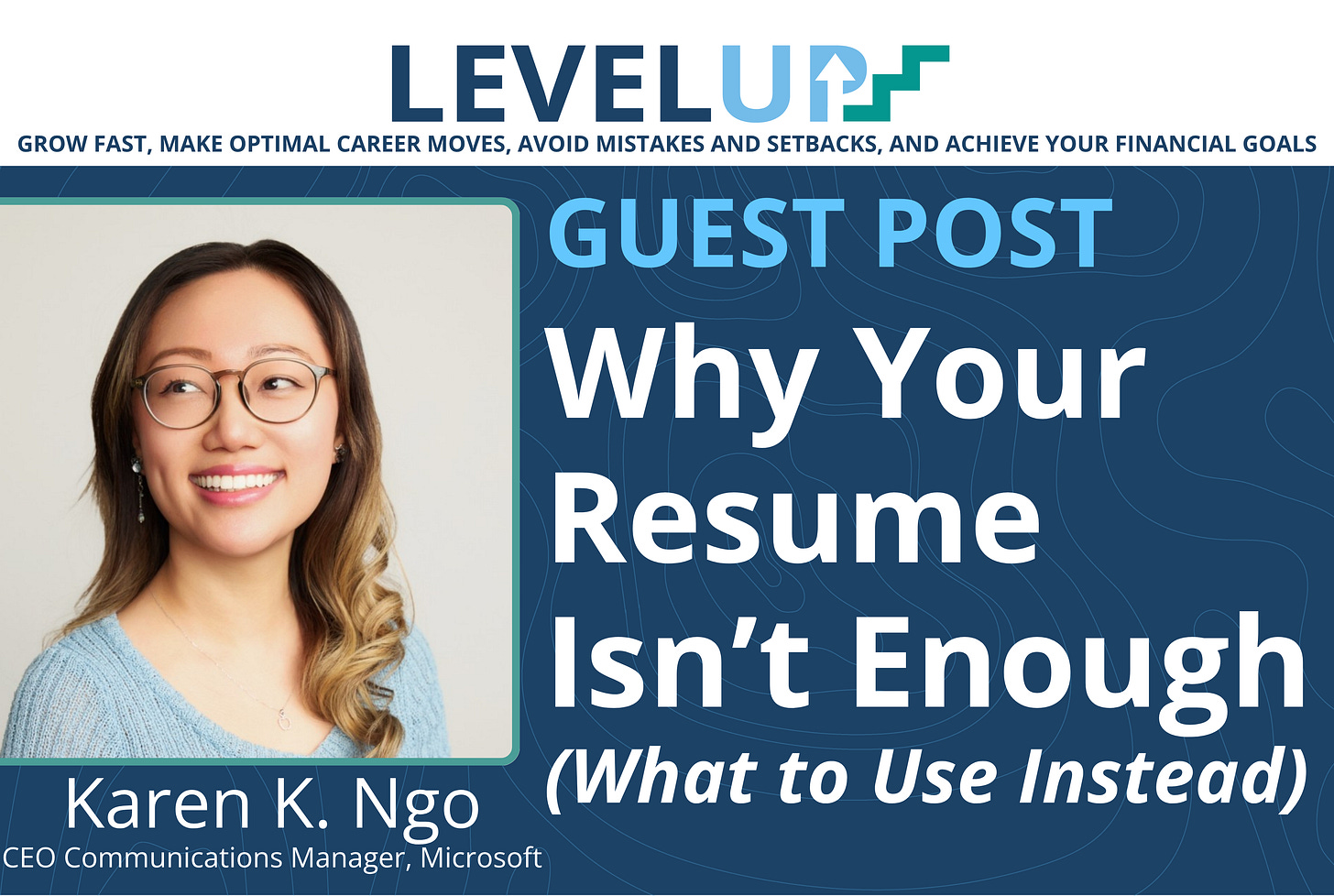
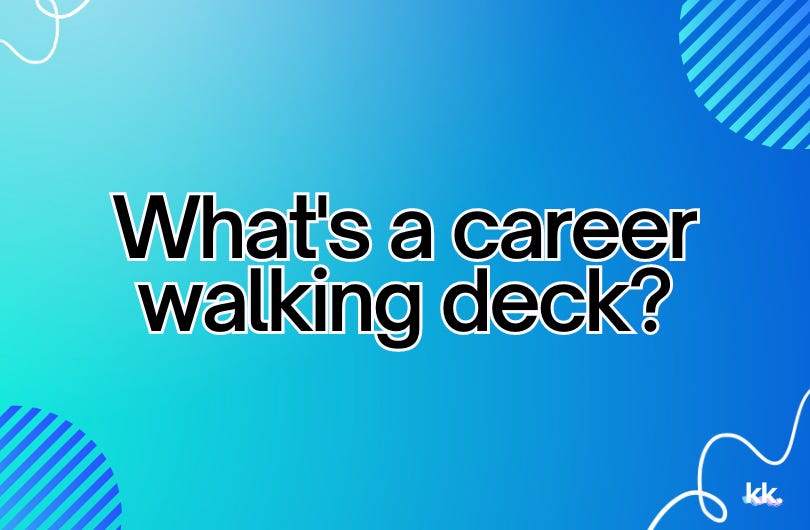

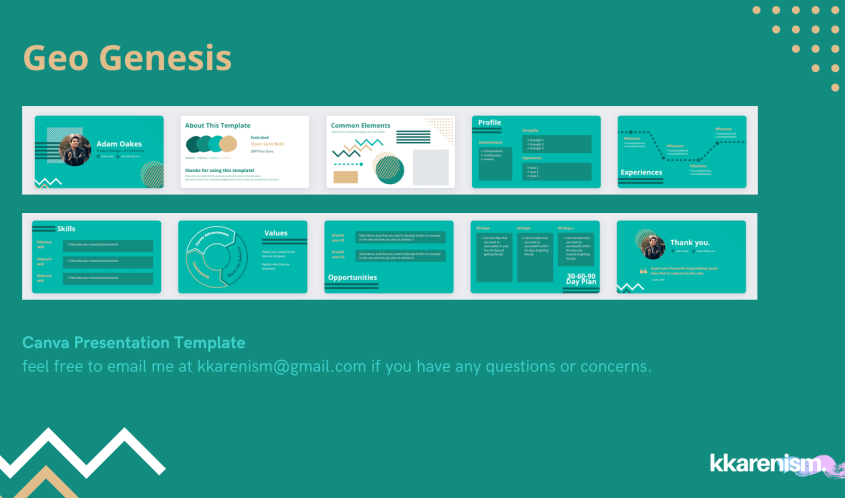
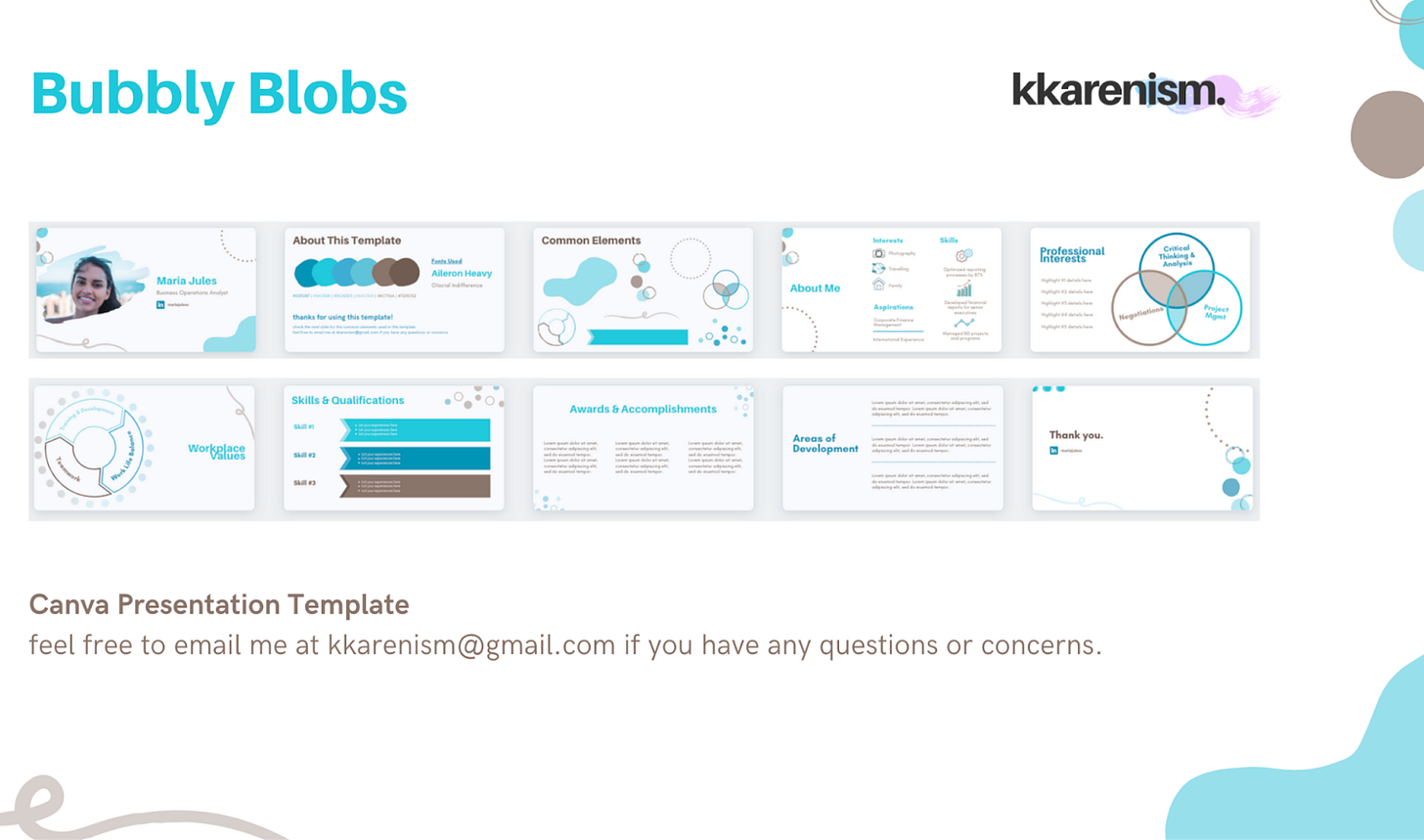

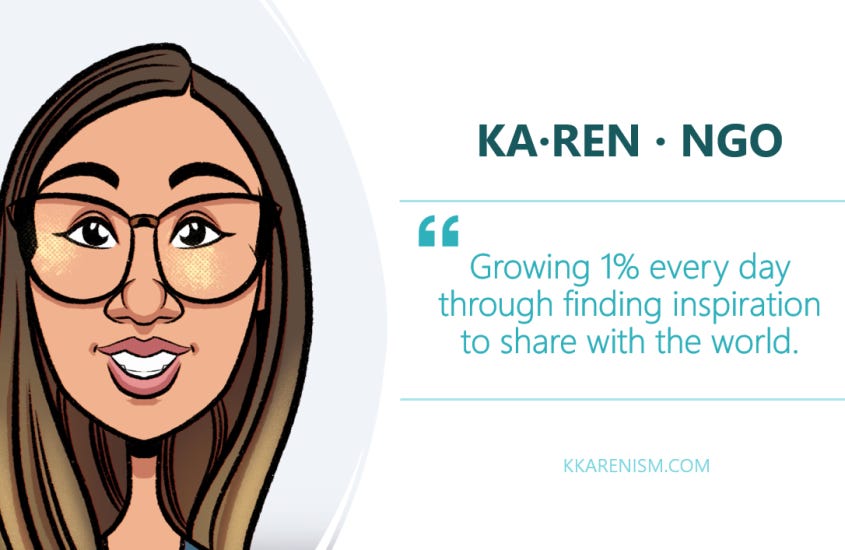
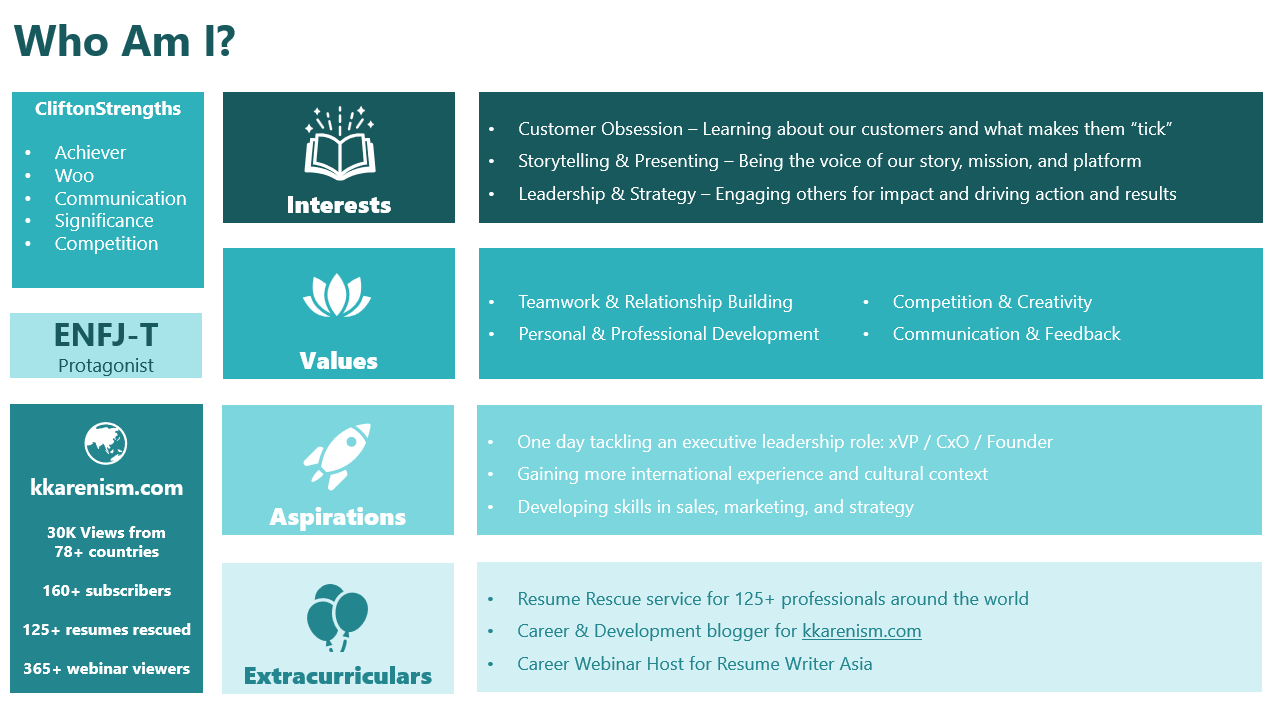
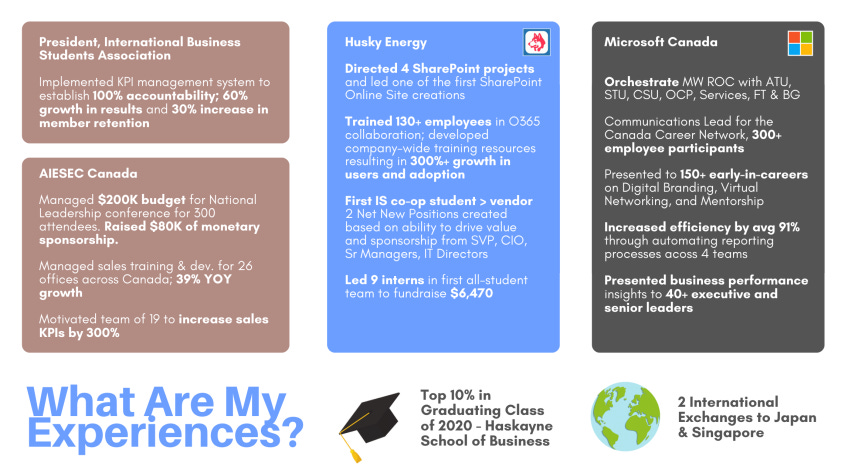

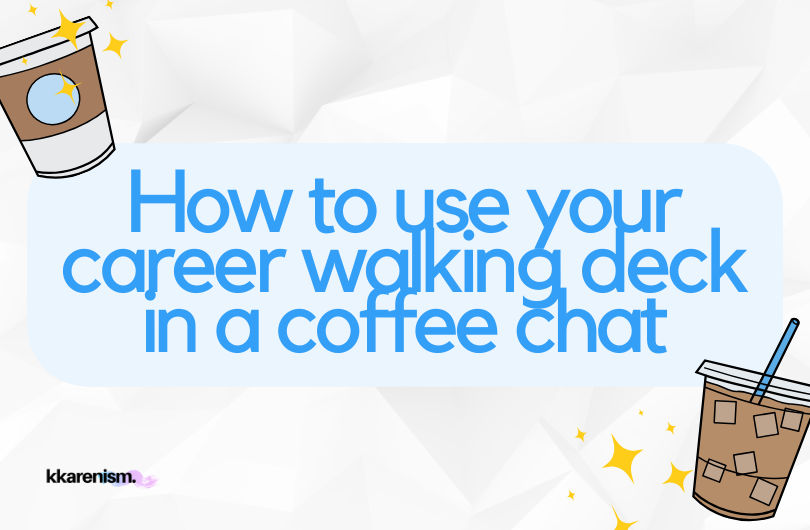
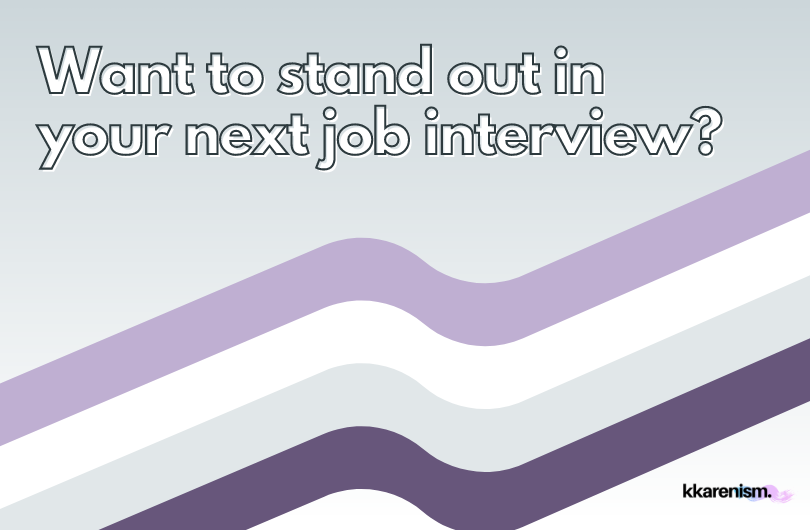


This is such a simple idea but amazingly powerful when executed well. Thank you for going to such a granular level. As you say details matter and it was really helpful to see those details.
As a hiring manager, I would absolutely be blown away if this was prepared for an interview! And for myself, as someone who is keen to explore opportunities adjacent to my current domain of expertise, this would be an impactful way to share transferable skills, experiences and values. So helpful, thank you!